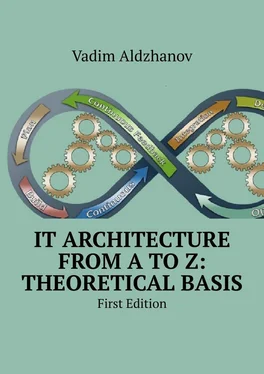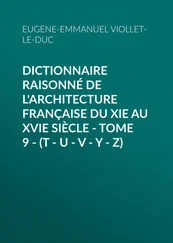Earned Value Technique (EVT) (also named as earning rules and crediting method) is a special method for measuring work performance for an element of a hierarchical work structure, a control account or a project.
Bottom-up Estimating is a work element estimating method. Activity is divided into actions. Requirements for each actions are estimated, and these estimates are summarized for this element of activity. The accuracy of the bottom-up estimates is determined by the size and complexity of the actions at the lower levels. Usually lesser activities increase the accuracy of estimates.
Top-down Estimating is a work element estimating method opposite to the bottom-up method.
Rolling Wave Planning is a type of planning for sequential development, in which the activity to be done in the near future is planned in detail with a deep disclosure of work breakdown structure, while far distant activity is planned with a relatively small disclosure of the work breakdown structure, but as work progresses the activities to be done in the coming time periods are clearly planned.
Earned Value Management (EVM) is a methodology for the integration of content, time and resources, as well as an objective measurement of project performance and efficiency achieved. The efficiency of the project implementation is measured by determining the planned cost of the work performed (i.e., the used capacity) and its subsequent comparison to the actual cost of the work performed (i.e. the actual cost).
Risk Breakdown Structure (RBS) is a breakdown presentation of project’s known categorized and subcategorized risks, indicating the different areas and causes of potential risks. The risk breakdown structure is often adjusted to specific types of projects.
Probability and Impact Matrix is a conventional approach adopted to classify risk as high, medium or low by comparing two risk parameters: likelihood and impact on the project objectives.
Responsibility Assignment Matrix (RAM) is a structure aligning the organizational structure of the uses the Work Breakdown Structure and helping designate the persons responsible for each project element.
Milestone Schedule is a summary level schedule displaying the timing of major project related milestones.
Analog Method is an analysis of all available data relating the implementation of previous similar projects in order to estimate the likelihood of loss. This method involves such key action aspects as an attempt to compare with a previous similar project. Information on the planned and actual deadlines is collected. If the terms did not match, the causes are analyzed, countermeasures are developed and the project is planned. The Analog Method is most widely used in risk assessment of frequently repeated projects, for example, in construction.
Expert Judgment refers to a technique in which judgment is made based upon a specific expertise that has been acquired in a specific knowledge area, or product area, a particular discipline, an industry, etc. Judgment is carried out using different methods with a focus on various aspects. The expertise can be carried out by an external group or person with a specific relevant education, skill set or knowledge. There can be several resources of expert including other divisions of executing organization, consultants, project members, including customers, professional and technical organizations and other miscellaneous industry groups.
Indicator Approach uses indicators of completed projects. For example, the interest rate method fully distributes costs in different phases. If the actual costs of the first phase are known, the rest is calculated according to the percentage distribution:
Analysis – 20%
Project – 35%
Implementation – 30%
Verification – 15%.
Poker Estimate implies the following key aspects of action:
• create a work group (developers, analysts, business representatives, and so on);
• Voice task;
• let each participant evaluate the project timeline based on his/her experience and level;
• hear each member’s opinion;
• choose the shortest and longest project term to discuss by the work group;
• correlate opinions during discussion, and make a common decision with the whole work group.
Estimated development time or hours
An important element in IT management within a software development project is to estimate the time required for product development. This issue is relevant in the solution development by both: internal resources and outsourcing. A classic example is shown in the diagram.
All this can lead to such grave consequences as disruption of the project deadline, excess of the project cost (overtime, etc.) or customer’s dissatisfaction with the product quality. To eliminate above-mentioned problems, you can use the following methods and techniques:
• Poker Estimate;
• Comparison with analog;
• Bottom up & Top down;
• Expert review.

Diagram: Project cost
After analyzing one of the methods, add the following to the project timeline:
• 15—20% percent of time to cover risks and unforeseen cases;
• consider 80% percent of the developer’s work time (instead of formal 100%), as the main working unit involved in the project when making calculations.
Project documentation is a set of documents describing a project and regulating activities within a project.
Projects are valid due to prompt information exchange between the project team and external stakeholders/suppliers. Each project participant is responsible for providing or not providing information.
The rule is “Information is a something ones lend and something the others borrow.”
The progress of the design work must be constantly documented, being internal information of the project. Information can be divided into two parts:
• Internal
• External.
The project information can be accessible by almost all project team, and only part of the information is provided to external recipients. The internal information can be:
• Plans;
• Statuses;
• Minutes of meetings;
• Documentation on defects, tests;
• Contracts with suppliers;
• Risk analysis.
The information to be provided outside is:
• Competency matrix;
• Journal of the division of labor;
• Project statuses;
• Milestone schedule;
• Final reports.
The project is documented throughout the life cycle. If regulatory rules for document control is missing and project documents accumulate, the project’s information environment may hamper the project implementation. Different types of projects have their own set or package of project documents. For example, the project documentation for the house construction will include a draft design and a feasibility study of the construction project, a working draft, initial permit documentation, etc. While the project documentation for the software implementation should contain a description of the automated functions, the problem statement, the classification and coding systems, and other documents. The list of project management documents package :
Charter of the project
Читать дальше













